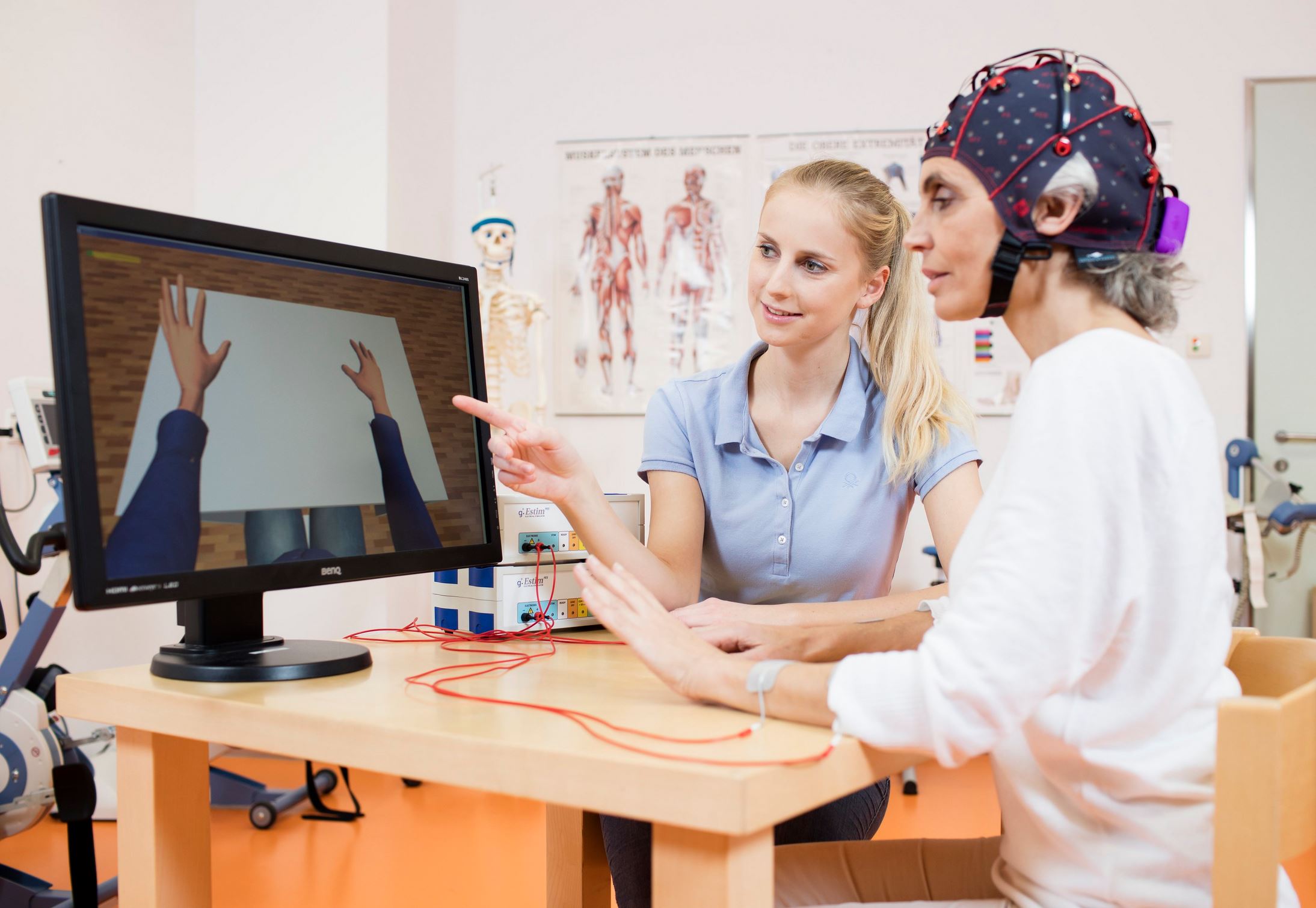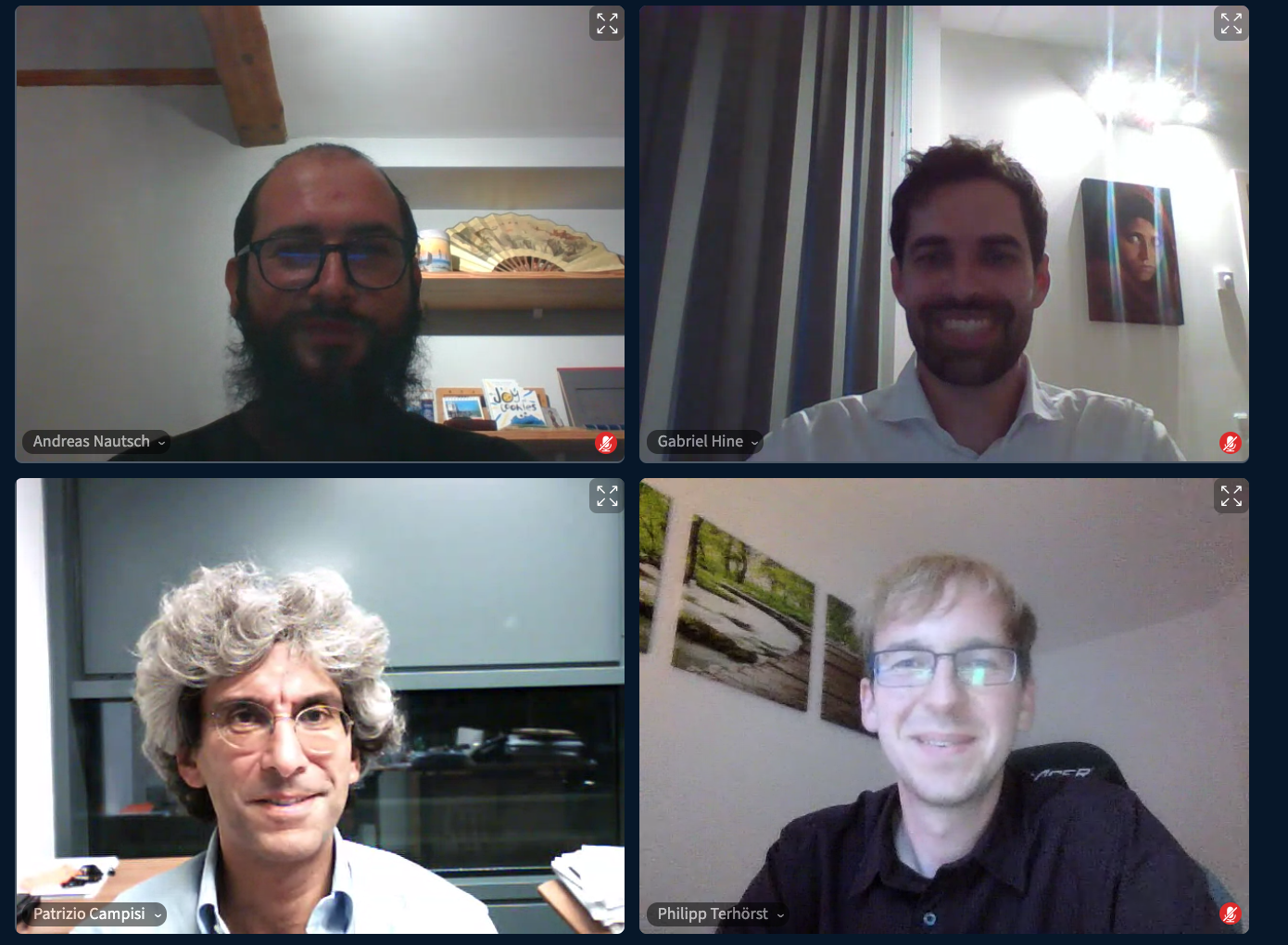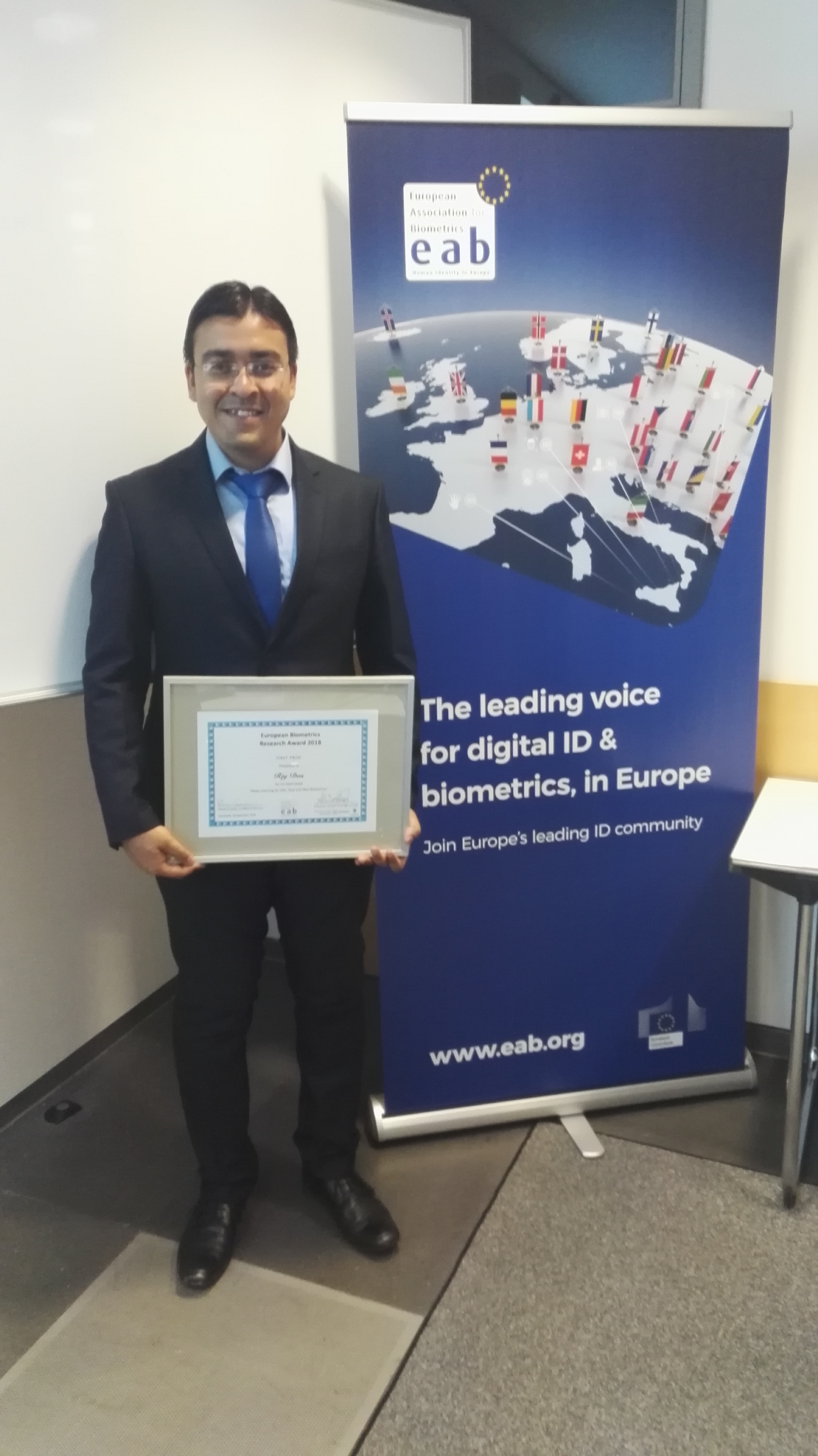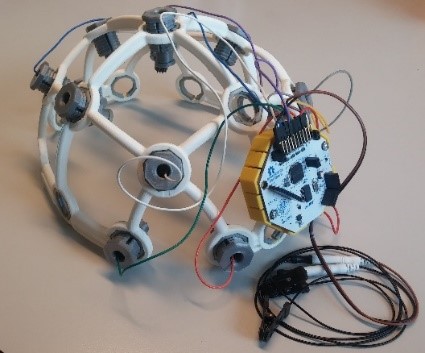-
BCI Workshop
-
- BCI Workshop
- Date: June 13th, 2023 Time: 9:30-12:45
- @ "Sala Multimediale", Dipartimento di Ingegneria Industriale, Elettronica e Meccanica.
- The event is technically sponsored by the IEEE Italy Section Biometric Council.
- Abstract: Brain-computer interface technology holds immense potential for numerous fields and applications. Slobodan will present some BCI basics as a theoretical background for the hands-on part.
The practical part of the session will address a motor imagery task using the recoveriX system for neurorehabilitation, an attention task using the "Unicorn Speller" communication tool and a code-based VEP using the "Unicorn Maze" game, which are the most frequently used techniques in the BCI. Slobodan will also show the design of closed-loop circuits with MATLAB Simulink, which perfectly illustrates BCI systems.
- 9:30 - 10:15 Presentation of BCI basics, short presentation which provide theory basics
- 10:15 - 11:00 Motor imagery task using recoveriX system or biosignals recording in Flight Simulator (free online game); hands on (one volunteer is needed to play the subject - short hair one preferably)
- 11:00 - 11:30 Attention task (P300) using Unicorn Speller; hands-on exercise
- 11:30 - 12:00 Code based visual evoked potentials using Unicorn Maze game
- 12:00 - 12:45 HISYS Simulink modelling for BCI applications and closed-loop; presentation using MATLAB Simulink, presentation-exercise with different examples of real life experiment
-
-
Lecture by Mikkel B. Stegmann and Gabriel E. Hine, Fingerprint Cards A/S.
-
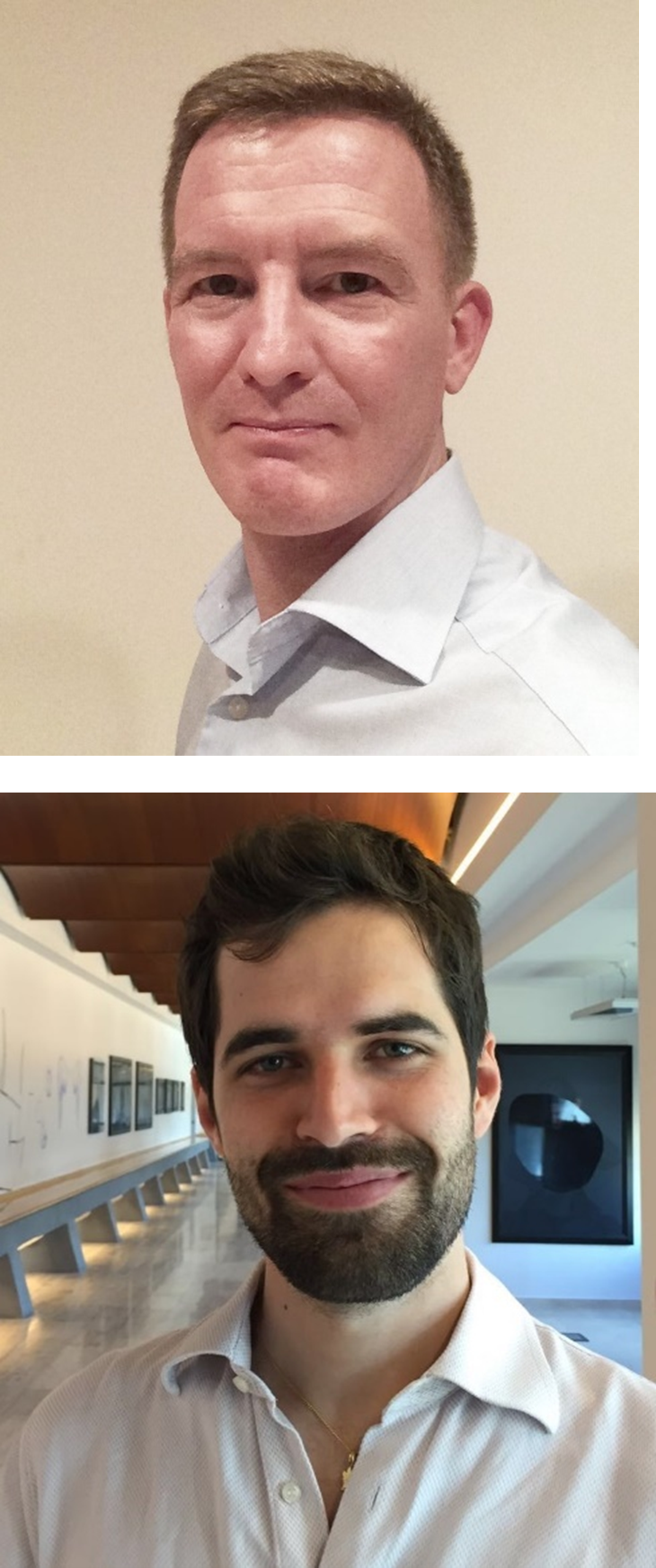
- We are honored to host Mikkel B. Stegmann and Gabriel E. Hine for the interesting lecture "Challenges within commercial iris recognition".
- Date: October 6th, 2022 Time: 14:00-15:00
- @ "Sala Multimediale", Dipartimento di Ingegneria Industriale, Elettronica e Meccanica.
- The event is technically sponsored by the IEEE Italy Section Biometric Council.
- Abstract: In this talk, we will introduce the biometric company Fingerprint Cards and discuss high-level interests within commercial iris recognition. Challenges specific to the iris modality will be reviewed, and comparisons to competing modalities such as face recognition will be made. We will end by introducing the audience to the classic Daugman iris recognition pipeline and mention collaborative possibilities.
- Bio: Mikkel B. Stegmann received the received the Ph.D. degree in applied mathematics from the Technical University of Denmark in 2004. Following a post.doc. on machine learning applied to medical images, he moved to 3Shape A/S to conduct design, principal architecture and management of 3D laser scanners during the years 2006-2011. His subsequent four years were spent with Teklatech A/S modelling ASIC power delivery networks and later, in the role of Principal Scientist, he pioneered a unique, constrained, multi-objective optimization engine. Since 2015 he has been creating biometric technology with Fingerprint Cards A/S, currently specializing in iris recognition and face analysis as Director of the Touchless Technologies unit. His technical interests include optimization, machine learning, biometry, system architecture, cameras / optics / illuminators, software design and edge computing.
- Bio: Gabriel E. Hine received his Ph.D. in Applied Electronics from Roma Tre University in 2019 with the thesis ''Anonymous biometrics''. Since 2020 he has been working with Fingerprint Cards A/S as an algorithms and systems engineer, where he has filed four patents on liveness detection. His technical and research interests include signal processing, information security, and biometrics.
-
-
Lecture by Anderson Rocha of University of Campinas, Brazil.
-

- We are honored to host Anderson Rocha for his interesting lecture "Reasoning for Complex Data through Ensemble-based Self-Supervised Learning".
- Date: June 28th, 2022 Time: 16:00-17:00
- @ "Sala Multimediale", Dipartimento di Ingegneria Industriale, Elettronica e Meccanica.
- The event is technically sponsored by the IEEE Italy Section Biometric Council.
- Abstract: Self-supervised learning deals with problems that have little or no available labeled data. Recent work has shown impressive results when underlying classes have significant semantic differences. One important dataset in which this technique thrives is ImageNet, as intra-class distances are substantially lower than inter-class distances. However, this is not the case for several critical tasks, and general self-supervised learning methods fail to learn discriminative features when classes have closer semantics, thus requiring more robust strategies. We propose a strategy to tackle this problem and to enable learning from unlabeled data even when samples from different classes are not prominently diverse. We approach the problem by leveraging a novel ensemble-based clustering strategy where clusters derived from different configurations are combined to generate a better grouping for the data samples in a fully-unsupervised way. This strategy allows clusters with different densities and higher variability to emerge, which in turn reduces intra-class discrepancies, without requiring the burden of finding an optimal configuration per dataset. We also consider different Convolutional Neural Networks to compute distances between samples. We refine these distances by performing context analysis and grouping them to capture complementary information. We consider two applications to validate our pipeline: Person Re-Identification and Text Authorship Verification. These are challenging applications considering that classes are semantically close to each other and that training and test sets have disjoint identities. Our method is robust across different modalities and outperforms state-of-the-art results with a fully-unsupervised solution without any labeling or human intervention.
- Nano-bio: Anderson Rocha is a full professor of artificial intelligence and digital forensics at the Institute of Computing, University of Campinas (Unicamp), Brazil. His main interests include Artificial Intelligence, Digital Forensics, and Reasoning for Complex Data He is a Senior IEEE member, an elected affiliate member of the Brazilian Academy of Sciences (ABC) and the Brazilian Academy of Forensic Sciences (ABC). He is a two-term elected member of the IEEE Information Forensics and Security Technical Committee (IFS-TC) and served as its Chair for the 2019-2020 term. He is a Microsoft Research and a Google Research Faculty Fellow, important academic recognitions given to researchers by Microsoft Research and Google, respectively.
-
-
Best Paper Award at the 11th International Conference on Pattern Recognition Applications and Methods (ICPRAM) 2022
-
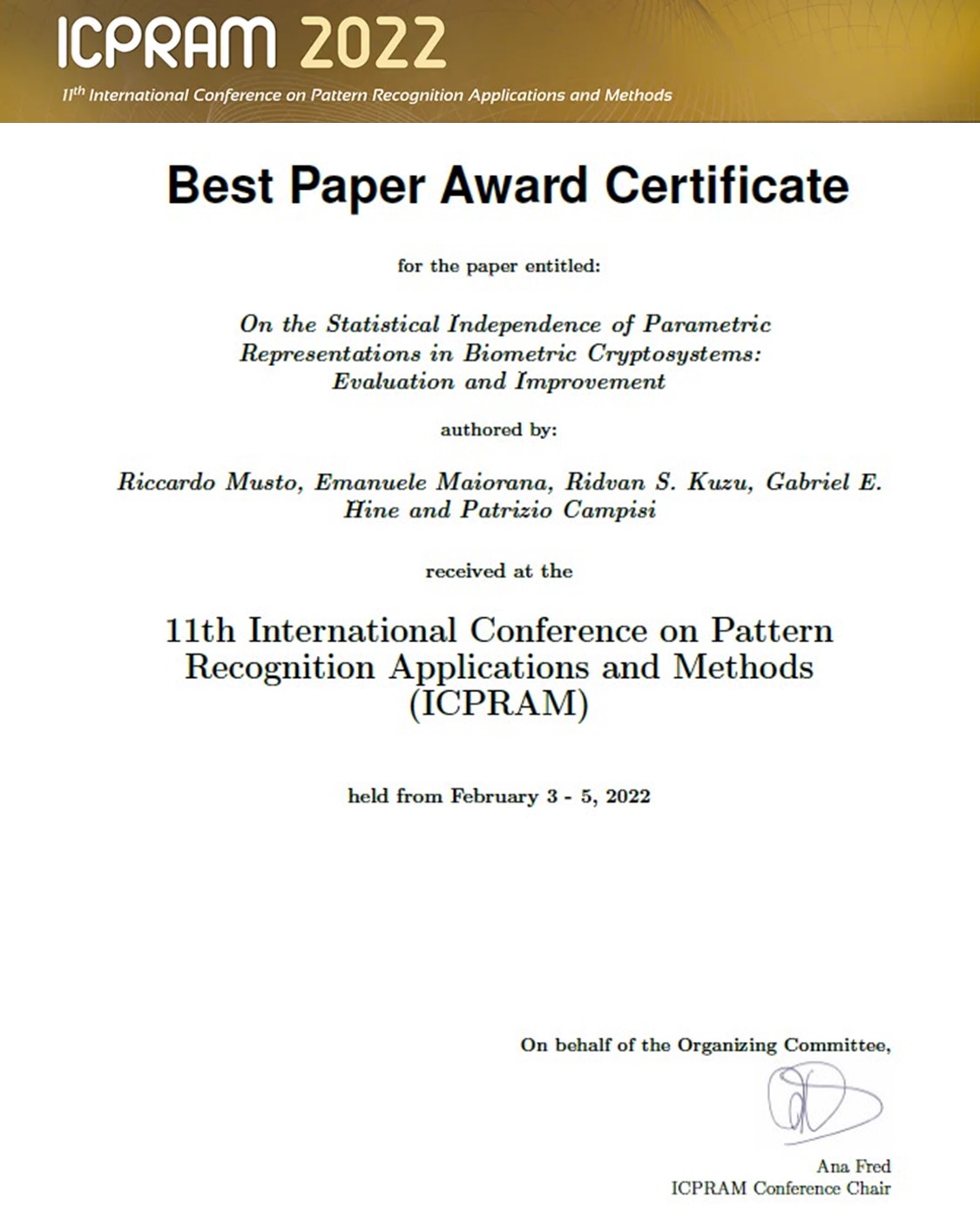
-
The paper "On the Statistical Independence of Parametric Representations in Biometric Cryptosystems: Evaluation and Improvement", authored by Riccardo Musto, Emanuele Maiorana, Ridvan S. Kuzu, Gabriel E. Hine and Patrizio Campisi, received the BEST PAPER AWARD at the 11th International Conference on Pattern Recognition Applications and Methods (ICPRAM), held from February 3 - 5, 2022.
Ridvan Salih Kuzu won the 2021 European Association on Biometrics (EAB) Research Award
-
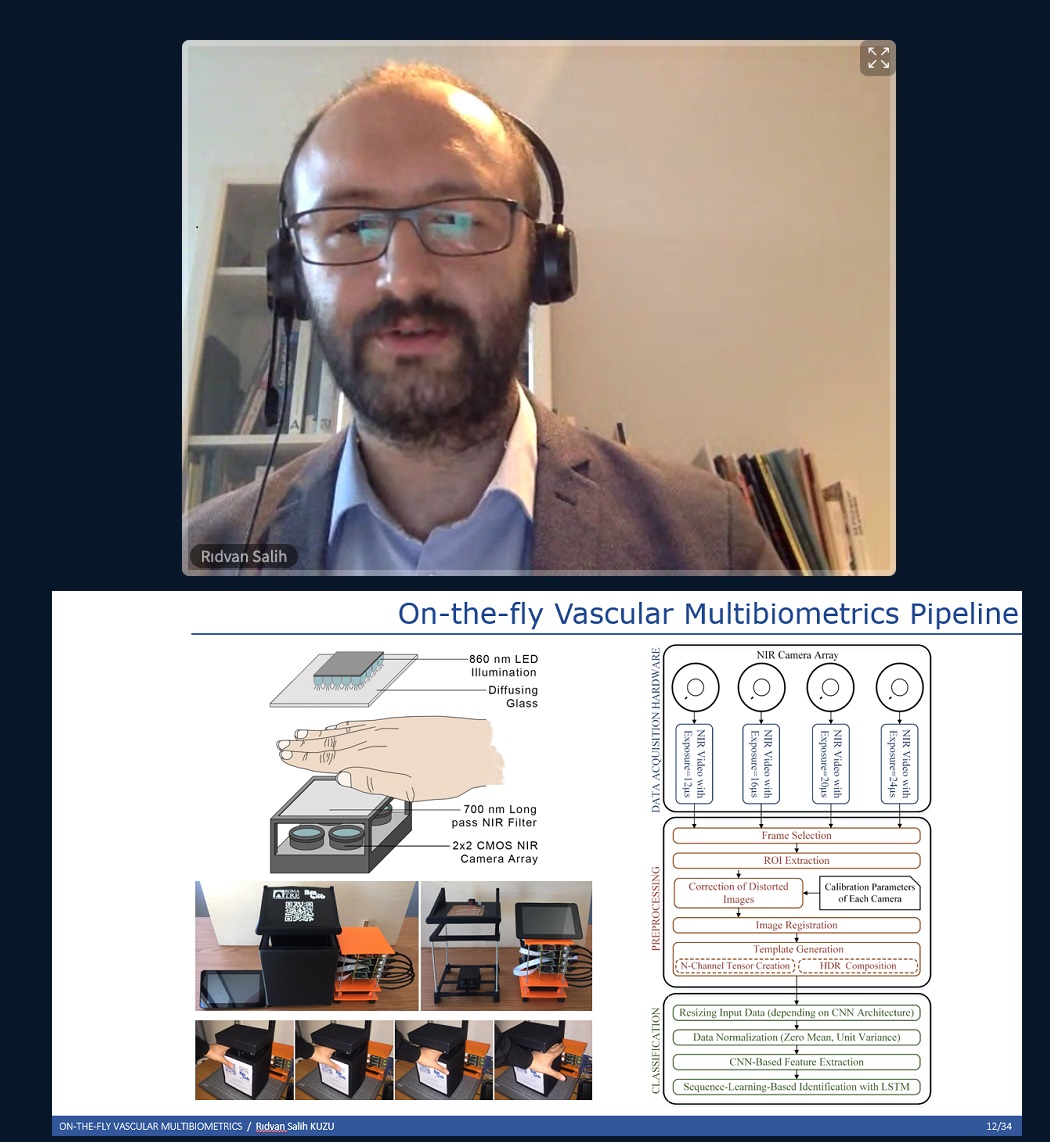
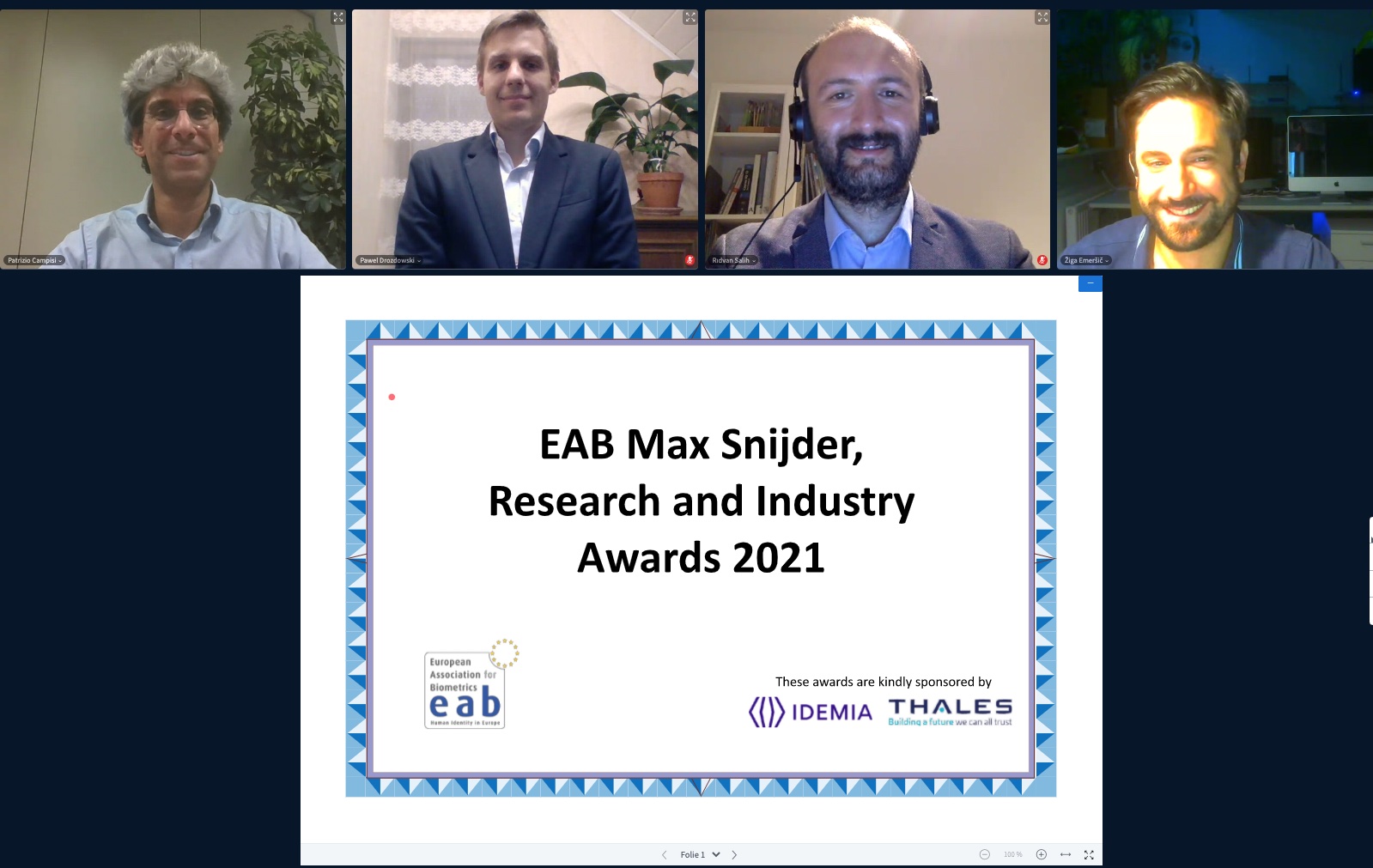
-
On 15 September 2021 the European Association for Biometrics (EAB) awarded young researchers for their outstanding works in the area of biometrics. The selection for the research award has been made on the basis of the academic and scientific quality of the submitted works as well as on the quality of their presentations. An international jury chose 3 candidates out of a broad range of submitted high quality papers to present their significant contribution in front of the jury, the EAB members and the public audience in a virtual meeting.
The European Biometrics Research Award 2021 was granted to Ridvan Salih Kuzu from Roma Tre University (Italy) for his PhD-thesis ''On-the-fly Vascular Multibiometrics''. With his PhD work releases the constraint of fixed hand in touchless vein biometrics and enables walk-through-style biometrics. The thesis proves that low-cost sensors are sufficient for robust vein biometrics if multi-exposure images are exploited and customized deep neural network architectures are applied. Moreover the PhD work demonstrated that soft biometric traits like gender or age are reliable information to enhance the security of vein biometrics.
Lecture by R.N.J. Veldhuis (Raymond) of University of Twente
-
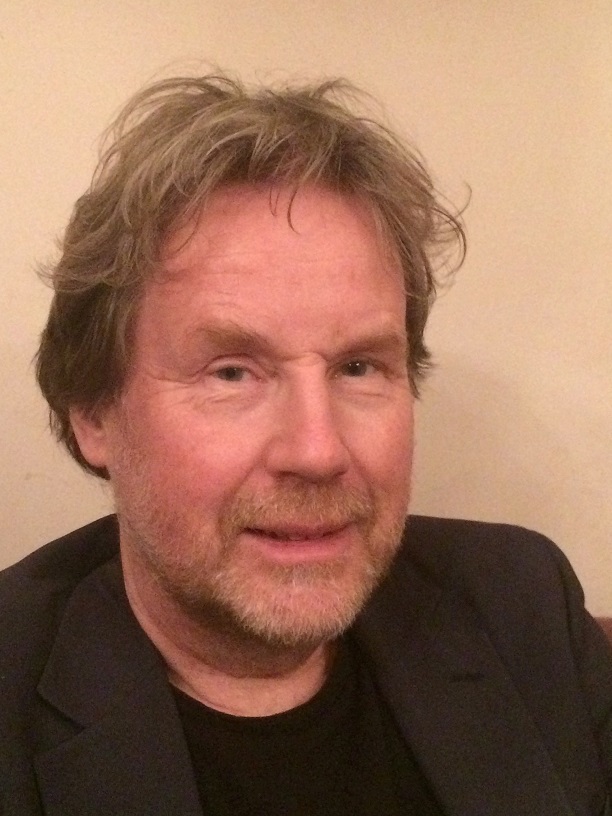
-
We are honored to host R.N.J. Veldhuis (Raymond) for his interesting lecture:
- Modeling the finger-vein imaging process
- Date: December 11, 2020 Time: 15:30-16:30 CET
- Webinar, available @
- Microsoft Teams: https://bit.ly/3906LwX
- IEEE vTools: https://events.vtools.ieee.org/m/248717
- The event is technically sponsored by the IEEE Italy Section Biometric Council.
- Abstract: Finger-vein, or finger vascular pattern recognition is an upcoming form biometric recognition that combines a good recognition performance with an inherent robustness against presentation attacks in the sense that it does not leave traces. The first step in the recognition process is the acquisition of a gray-scale image in which the vascular pattern is visible as dark lines. From this image relevant features are extracted for recognition.
In this webinar I will describe recent work at the University of Twente in which we developed a physical model of the finger. The purpose of that model is to better understand the imaging process of finger vascular patterns, leading on the longer term to better sensors and improved recognition performance. The first results give new insights in the role of soft tissue, bone and joints in the imaging process. Based on the model we developed finger phantoms that can be used to support the development of sensors and that can provide ground truth for finger-vein detection.
- Bio: Prof. Dr. Raymond Veldhuis is a full professor of Biometric Pattern Recognition at the University of Twente, where he leads the Data Management and Biometrics group. His main research topics are face recognition, fingerprint recognition, vascular pattern recognition, multibiometrics, and biometric template protection. The research is both applied and fundamental. Raymond Veldhuis is Editor of IEEE TIFS and chairman of the EAB Special Interest Group Academia. He has been involved in numerous national and EU projects on biometrics, of which the ITN PriMa (Privacy Matters) is the most recent. Raymond Veldhuis teaches analogue and digital signal processing as well as biometrics and pattern recognition.
Lecture by Vitomir Štruc of University of Ljubljana
-
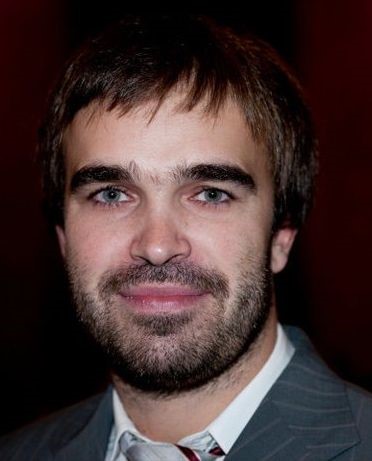
-
We are honored to host Vitomir Štruc for his interesting lecture:
- Face super-resolution in biometrics: Recent advances and future challenges
- Date: December 3, 2020 Time: 14:15-15:15 CET
- Webinar, available @
- Microsoft Teams: https://bit.ly/3kWCyRU
- IEEE vTools: https://events.vtools.ieee.org/m/248896
- The event is technically sponsored by the IEEE Italy Section Biometric Council.
- Abstract: Face super-resolution (or face hallucination) refers to the task of recovering high-resolution facial images from corresponding low-resolution inputs. Solutions to this task have important applications in face-oriented vision problems, such as face editing, face alignment, 3D face reconstruction, face attribute estimation and most notably face recognition. Driven by advances in deep learning, recent years have seen tremendous progress in this area with contemporary deep face hallucination models achieving formidable performance. In my presentation, I will first talk about the recent progress in the field of face super-resolution, review existing approaches and discuss the most important trends in the area. Next, I will present our solution to the problem of face hallucination, which uses explicit identity constraints in addition to the common reconstruction loss during model training and show how it compares to state-of-the-art hallucination models from the literature. I will elaborate on the main limitations of existing face super-resolution approaches and present challenges that will need to be addressed in the future. Finally, I will describe our approach to face recognition from low-resolution images that relies on super-resolution and is shown to result in state-of-the-art performance on a popular benchmark.
- Bio: Vitomir Štruc is an Associate Professor at the University of Ljubljana, Slovenia. He received his doctoral degree from the Faculty of Electrical Engineering in Ljubljana in 2010. Vitomir's research interests include problems related to biometrics, computer vision, image processing, pattern recognition and machine learning. He (co-)authored more than 100 research papers for leading international peer reviewed journals and conferences in these and related areas. He served in different capacities on the organizing committees of several top-tier vision conferences, including IEEE Face and Gesture, ICB, WACV and IJCB. Vitomir is a Senior Area Editor for the IEEE Transactions on Information Forensics and Security, and an Associate Editor for Pattern Recognition, Signal Processing, and IET Biometrics. He served as an Area Chair for WACV 2018, 2019, 2020, ICPR 2018, Eusipco 2019 and FG 2020. Dr. Štruc is a member of the IEEE, IAPR, EURASIP, Slovenia's national contact point for the EAB and the current president of the Slovenian Pattern Recognition Society, the Slovenian branch of IAPR.
European Association for Biometrics Research Award 2020
- The European Biometrics Research Award 2020 was granted to Gabriel Emile Hine from Roma Tre University (Italy) for his PhD-thesis A Zero-leakage and indistinguishable Auxiliary data representation for Biometric Cryptosystems.
- In his PhD, Gabriel developed techniques that enable to use biometric traits for authentication in an anonymous manner. The basic idea behind anonymous biometrics is to not use biometric samples themselves as identifiers, but rather bind the biometric trait with a pseudonymous identifier that acts as the authenticator. With this aim, he proposed a novel biometric cryptosystem obtaining perfect security, that is not leaking any useful information from the stored auxiliary data. The proposed system ensures indistinguishability as well, meaning that the system is able to produce multiple identifiers from the same biometric trait that are indistinguishable from identifiers originated by independent users.
Lectures by Akihiko Sugiyama of Yahoo! JAPAN Research.
-
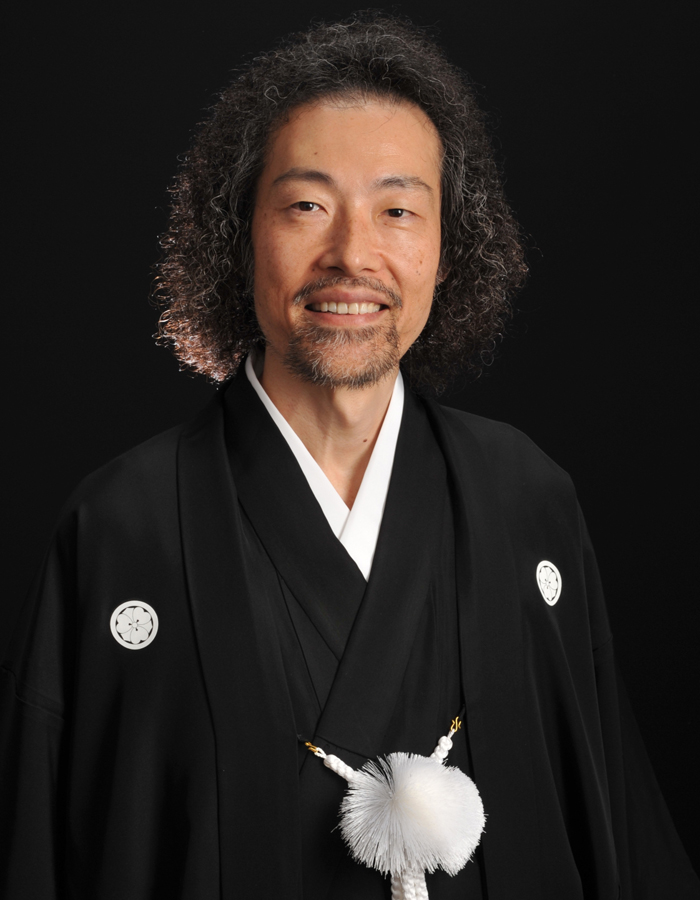
- We are honored to host Akihiko Sugiyama for his interesting lecture "Signal Enhancement in Consumer Products".
- Date: June 18, 2019 Time: 10.30-12.00
- @ "Sala Multimediale", Dipartimento di Ingegneria.
- The event is technically sponsored by the IEEE Italy Section Biometric Council.
- Abstract: This lecture presents the A to Z of signal enhancement when it is applied to consumer products such as cellphone handsets, digital still cameras and camcorders, PCs and tablet computers, TV receivers, and gaming controllers. Starting from basic single channel signal enhancement in the frequency domain, it continues on to two-channel processing and multi-channel processing also known as microphone arrays. Types of noise to be covered include environmental noise, mechanical noise, impact (or transient) noise and wind noise. Problems and solutions that include recent topics are discussed for each application from a viewpoint of the algorithm and implementation. Sound demonstrations will be provided to help audience understand the effect of solutions.
- Bio: Akihiko Sugiyama (a.k.a. Ken Sugiyama), affiliated with Yahoo! JAPAN Research, has been engaged in a wide variety of research projects in signal processing such as audio coding and interference/noise control. His team developed the world's first Silicon Audio in 1994, a precursor of iPod. He served as the Chair of Audio and Acoustic Signal Processing Technical Committee, IEEE Signal Processing Society (SPS) [2011-2012], as associate editors for several journals such as IEEE Trans. Signal Processing [1994-1996], as the Secretary and a Member at Large to the Conference Board of SPS [2010-2011], as a member of the Awards Board of SPS [2015-2017], as the Chair of Japan Chapter of SPS [2010-2011], and a member of IEEE Fellow Committee. He was a Technical Program Chair for ICASSP2012. He has contributed to 17 chapters of books and is the inventor of 217 registered patents with more pending applications in the field of signal processing in Japan and overseas. He received 17 awards such as the 2002 IEICE Best Paper Award, the 2006 IEICE Achievement Award, and the 2013 Ichimura Industry Award. He has delivered 117 invited talks in 48 cities of 20 countries. He is Fellow of IEEE and IEICE, and a Distinguished Lecturer for IEEE SPS [2014-2015] and for IEEE CE (Consumer Electronics Society) [2017-2018].
Lectures by Hazim Kemal Ekenel of Istanbul Technical University , Turkey.
-

- We are honored to host Hazim Kemal Ekenel for his interesting lecture "Human Centered Computer Vision".
- Date: May 20th, 2019 Time: 11.00-12.00
- @ "Sala Multimediale", Dipartimento di Ingegneria.
- The event is technically sponsored by the IEEE Italy Section Biometric Council.
- Abstract: Facial image processing and analysis is the task of automatically analyzing face images in order to acquire information about the depicted persons. This includes a person's identity, emotional state, facial gestures, age, and gender. The large number of European projects that involves facial image processing as a part shows its crucial role in a wide range of application domains, such as security, smart environments, human-computer interfaces, and content-based image and video analysis. Considering the advanced security needs of the society and the shift to the paradigm of human-centered computing for natural interfaces, the interest in face processing is expected to continue with increasing pace. In this talk Dr. Ekenel is going to present an overview of facial image processing and analysis research activities, as well as their recent work on deep learning @ SiMiT Lab (http://simitlab.itu.edu.tr/). The covered topics will be about face alignment, face recognition, facial expression analysis, and their applications. Deep learning topics like transfer learning, dataset bias, domain adaptation, and context adaptation will also be discussed.
- Bio: Dr. Ekenel (https://web.itu.edu.tr/ekenel/) is an Associate Professor at the Department of Computer Engineering in Istanbul Technical University in Turkey and a Host Professor at the Signal Processing Lab 5 of École Polytechnique Fédérale de Lausanne (EPFL) in Switzerland. He received his Ph.D. degree in Computer Science from the University of Karlsruhe (TH) in 2009. He has founded the Facial Image Processing and Analysis group (http://face.cs.kit.edu/) at the Department of Computer Science in Karlsruhe Institute of Technology. He was the task leader for face recognition in several large-scale European projects. His face analysis technology has been used by several research labs and companies and has taken part in several demo and press events. He has received the EBF European Biometric Research Award in 2008 for his contributions to the field of face recognition and with the systems they have developed with his team, he received the Best Demo Award at the IEEE International Conference on Automatic Face and Gesture Recognition in 2008. He has coordinated the Benchmarking Facial Image Analysis Technologies (BeFIT) initiative and he was the primary organizer of the BeFIT workshops 2011 and 2012.
Lectures by Anderson Rocha of University of Campinas, Brazil.
-

- We are honored to host Anderson Rocha for his interesting lecture "Connecting Existing Pieces of Evidence in Time and Space for Understanding Real-World Events".
- Date: March 14th, 2019 Time: 11.00-12.00
- @ "Sala Multimediale", Dipartimento di Ingegneria.
- Abstract: In this talk, we will discuss problems associated with synchronizing specific events in space and time (X-coherence), fact-checking, and mining persons, objects and contents of interest from various and heterogeneous sources including - but not limited to - the internet, social media and surveillance imagery. For that, we seek to harness information from various media sources and synchronize the multiple textual and visual information pieces around the position of an event or object as well as order them so as to allow a better understanding about what happened before, during, and shortly after the event. After automatically organizing the data and understanding the order of the facts, we can devise and deploy solutions for mining persons or objects of interest for suspect analysis/tracking, fact-checking, or even understanding the nature of the said event. Additionally, by exploring the possible existing links among different pieces of information, we aim at further designing and developing media integrity analytics tools to hint at existing forgeries, sensitive content (e.g., violent content, child pornography), and spreading patterns of multimedia objects online. With demanding and sophisticated crimes and terrorist threats becoming ever more pervasive, allied with the advent and spread of fake news, our objective is to use the developed solutions to help us answering the four most important questions in forensics regarding an event: "who," "in what circumstances," "why," and "how," thus identifying the characteristics and circumstances in which an event has taken place.
- Nano-bio: Anderson Rocha is an associate professor at the Institute of Computing, University of Campinas (Unicamp), Brazil. He received his B.Sc (Computer Science) degree from Federal University of Lavras (UFLA), Brazil in 2003, and his M.Sc. and Ph.D. (Computer Science) from University of Campinas (Unicamp), Brazil, in 2006 and 2009, respectively. His main interests include Digital Forensics, Reasoning for Complex Data and Machine Intelligence. He has actively worked as a program committee member in several important Computer Vision, Pattern Recognition, and Digital Forensics events and is an associate editor of important international journals such as the IEEE Transactions on Information Forensics and Security (T.IFS), Elsevier Journal of Visual Communication and Image Representation (JVCI), the EURASIP/Springer Journal on Image and Video Processing (JIVP) and the IEEE Security & Privacy Magazine. He is an elected affiliate member of the Brazilian Academy of Sciences (ABC) and the Brazilian Academy of Forensic Sciences (ABC). He is a two-term elected member of the IEEE Information Forensics and Security Technical Committee (IFS-TC) and, in December, 2017, he has been elected vice-chair of this committee for the 2018 term. He is a Microsoft Research and a Google Research Faculty Fellow, important academic recognitions given to researchers by Microsoft Research and Google, respectively. In addition, in 2016, he has been awarded the Tan Chin Tuan (TCT) Fellowship, a recognition promoted by the Tan Chin Tuan Foundation in Singapore. He has been the principal investigator of a number of research projects in partnership with public funding agencies in Brazil and abroad as well as national and multi-national companies having already deposited and licensed several patents. Since April 2017, he has been the Associate Dean of the Institute of Computing, University of Campinas (Unicamp).
Lectures by R.N.J. Veldhuis (Raymond) of University of Twente
-

-
We are honored to host R.N.J. Veldhuis (Raymond) for two interesting lectures:
The events are technically sponsored by the IEEE Italy Section Biometric Council.
European Association for Biometrics Research Award 2018
-
Our former PhD student Rig Das has won the prestigious European Association for Biometrics (EAB) Research Award 2018 in Darmstadt, Germany, on September 26th, for his PhD related research work titled "Deep Learning for Face and Vein Biometrics: A Case Study".
EUSIPCO 2018

@BioMedia4n6_R3 is organizing @Eusipco2018 - The 26th European Signal Processing Conference, to be held in #Rome from the 3rd to the 7th of September 2018.
Ph.D. Positions within the H2020 MSC-ITN "enhAnced Mobile BiomEtRics" (AMBER) project
-
- The Biometrics and Multimedia Security Lab, Engineering Department, Roma Tre University, within the H2020 MSCA-ITN AMBER (enhAnced Mobile BiomEtRics) European Project (https://www.amber-biometrics.eu/), filled up two PhD positions with the respective following thematic areas:
- (ESR 3) Template protection in biometric-based mobile scenarios
- (ESR 4) Multibiometrics architectures and privacy in a mobile environment
-

Best Demo Award of the 7th GTTI-IEEE SPS thematic meeting on Multimedia Signal Processing, Jan. 2017
- Emanuela Piciucco won the Best Demo Award of the 7th GTTI-IEEE Signal Processing Society thematic meeting on Multimedia Signal Processing, Jan. 2017,with the contribution titled "EEG based biometric recognition using a low-cost DIY system" (http://www.isip40.it/gtti.mmsp2017/node/15)
- The aim of the demo was to show an example of a biometric recognition system working in a real-life situation based on EEG signals captured while the user is asked to stay in a "resting state condition with closed eyes". The data used for the identification task are captured using an acquisition device based on a low-cost hardware and a 3D printable headset.
- More details about EEG related research activity at the BIOMEDIA4N6 Lab can be found here
MIT Technology Review: The Best of the Physics arXiv
-
-
Our work on 4chan's /pol/ (https://arxiv.org/abs/1610.03452) has been selected as a "Best of Arxiv" paper (https://www.technologyreview.com/s/602707/the-best-of-the-physics-arxiv-week-ending-october-22-2016/)
IEEE Information Forensics and Security Technical Committee
-
Patrizio Campisi has been elected Chair or the IEEE Information Forensics and Security Technical Committee starting January 1st 2017
-
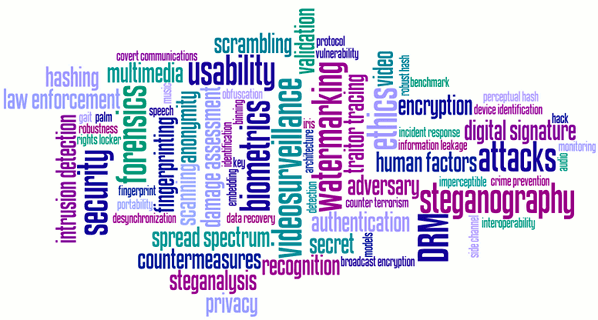
-
